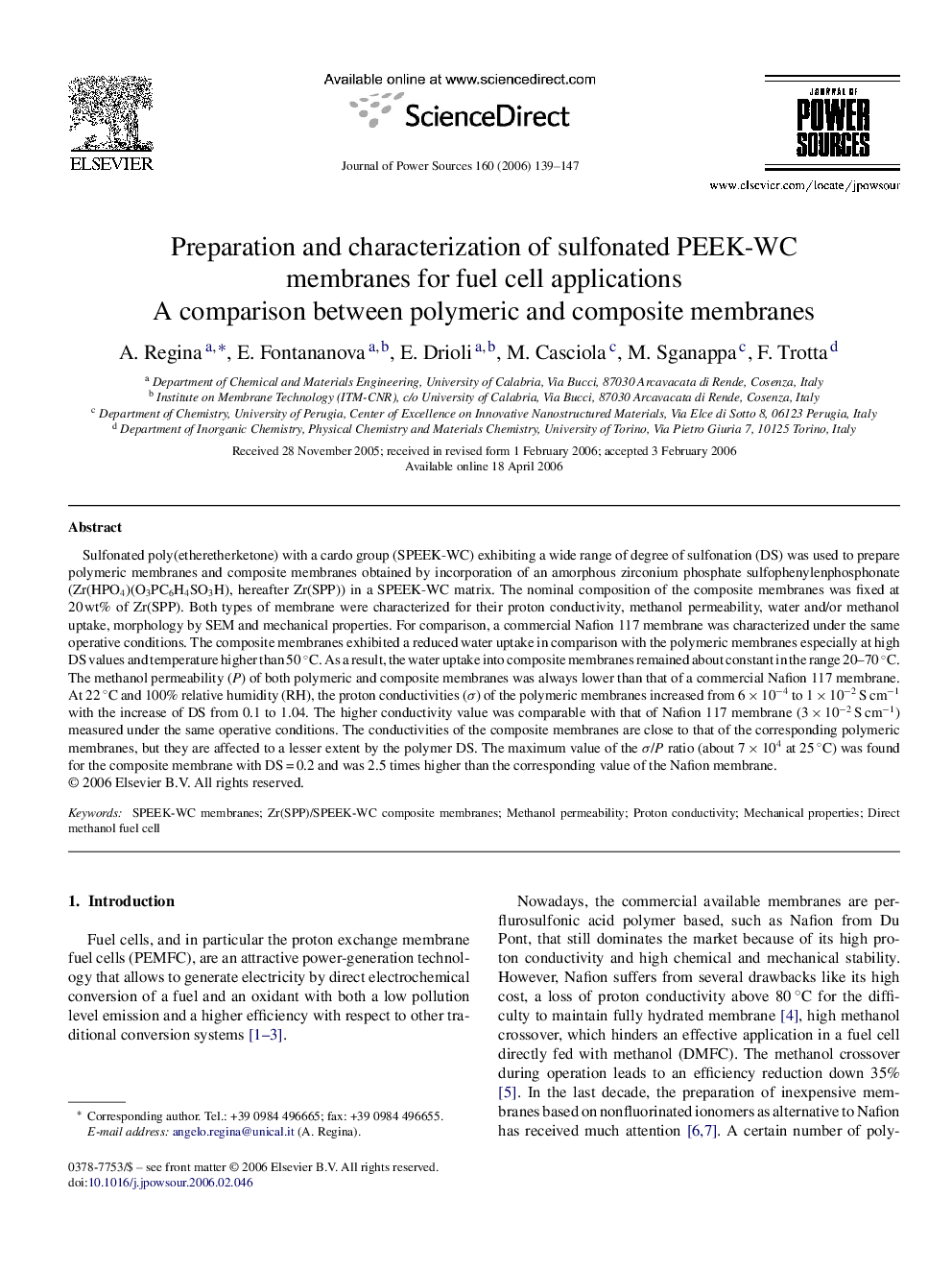| Article ID | Journal | Published Year | Pages | File Type |
|---|---|---|---|---|
| 1292236 | Journal of Power Sources | 2006 | 9 Pages |
Sulfonated poly(etheretherketone) with a cardo group (SPEEK-WC) exhibiting a wide range of degree of sulfonation (DS) was used to prepare polymeric membranes and composite membranes obtained by incorporation of an amorphous zirconium phosphate sulfophenylenphosphonate (Zr(HPO4)(O3PC6H4SO3H), hereafter Zr(SPP)) in a SPEEK-WC matrix. The nominal composition of the composite membranes was fixed at 20 wt% of Zr(SPP). Both types of membrane were characterized for their proton conductivity, methanol permeability, water and/or methanol uptake, morphology by SEM and mechanical properties. For comparison, a commercial Nafion 117 membrane was characterized under the same operative conditions. The composite membranes exhibited a reduced water uptake in comparison with the polymeric membranes especially at high DS values and temperature higher than 50 °C. As a result, the water uptake into composite membranes remained about constant in the range 20–70 °C. The methanol permeability (P) of both polymeric and composite membranes was always lower than that of a commercial Nafion 117 membrane. At 22 °C and 100% relative humidity (RH), the proton conductivities (σ) of the polymeric membranes increased from 6 × 10−4 to 1 × 10−2 S cm−1 with the increase of DS from 0.1 to 1.04. The higher conductivity value was comparable with that of Nafion 117 membrane (3 × 10−2 S cm−1) measured under the same operative conditions. The conductivities of the composite membranes are close to that of the corresponding polymeric membranes, but they are affected to a lesser extent by the polymer DS. The maximum value of the σ/P ratio (about 7 × 104 at 25 °C) was found for the composite membrane with DS = 0.2 and was 2.5 times higher than the corresponding value of the Nafion membrane.
